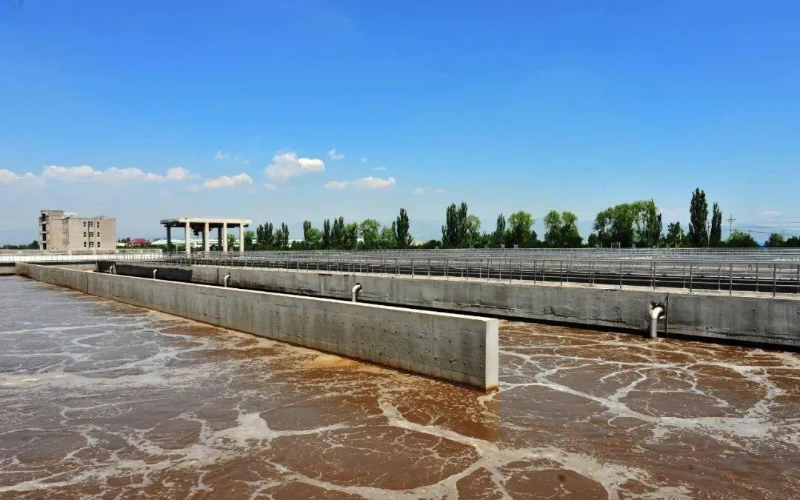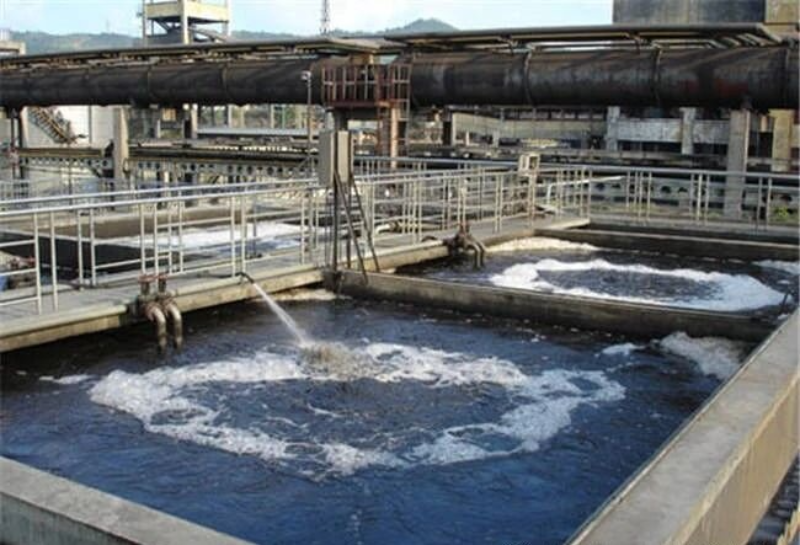(+86)0532-88988868

01 The current situation of water pollution in China
There is a shortage of water resources in China, and more than 400 cities across the country are currently short of water, of which more than 100 are seriously short of water. Due to its large population, the per capita water resources are only 25% of the world's per capita water, making it one of the world's water-poor countries. Due to the unbalanced distribution of water sources, there are more spatial and temporal differences in the south and north, more in the east and less in the west, and more in summer and less in winter. According to the 2010 national environmental quality data released by the Ministry of Environmental Protection, China's surface water is seriously polluted, with seven major water systems (the Yangtze River, the Yellow River, the Pearl River, the Songhua River, the Huai River, the Hai River and the Liao River) being lightly, moderately and severely polluted, and the problem of lake eutrophication is prominent. In recent years, major water pollution incidents have occurred frequently, with an incidence rate of up to 50%. Water scarcity is a growing problem.
1.1 Traditional sewage treatment technology
Water pollution usually refers to the deterioration of water quality caused by human causes, reducing the use value of water, and the main pollutants are solid waste and chemical substances (aerobic organic compounds, refractory organic matter, heavy metals, plant nutrients, acids, alkalis and petroleum substances).
At present, the commonly used sewage treatment technologies in China are:
(1) Physical method, i.e., the separation technology of insoluble pollutants (gravity sedimentation, coagulation clarification, buoyancy floating, centrifugal force separation, magnetic separation, etc.).
(2) Chemical method refers to the chemical transformation technology of pollutants (acid-base neutralization method, chemical precipitation method, redox method, chemical and physical disinfection method).
(3) Physical and chemical separation technology of dissolved pollutants (adsorption method, ion exchange method, membrane separation method, evaporation, freezing method).
1. 2 Disadvantages of common methods
The physical method occupies a large area, has high infrastructure and operation costs, large energy consumption, complex management, and is prone to sludge expansion. The equipment can not meet the requirements of high efficiency and low consumption, and the effect of single use is not obvious. The operation cost of chemical methods is high, and a large number of chemical reagents are consumed, which is easy to produce secondary pollution. In most cases, the two must be combined.

02Microbial technology
How can the municipal wastewater treatment process be developed in a sustainable direction such as low energy consumption, high efficiency, less residual sludge volume, the most convenient operation and management, and the realization of phosphorus recovery and treatment water reuse, and the technology used must be based on low energy consumption and low resource consumption? Microbiological technology meets these requirements.
2.1 Introduction to microorganisms
Microorganisms are a kind of microscopic single-celled or multicellular organisms with relatively simple individual structures, or even lower organisms without cell structures, which are invisible, intangible, and living tiny organisms, which can only be seen with the help of light microscopes and electron microscopes. Microorganisms include bacteria, viruses, fungi, etc.
2.2 Microbial technology and application
Microbial technology is mainly a single or comprehensive modern artificial technology system that uses the metabolic reaction process and biosynthetic products (including enzymes) of microorganisms to monitor, evaluate, remediate and remediate the polluted environment. It not only contains all the characteristics of biotechnology, but also integrates environmental pollution prevention and other engineering technologies, and has gradually developed into one of the effective means to solve the increasingly serious (especially water pollution) environmental problems with excellent economic and environmental benefits.
According to the different processes and product types of microbial degradation, microbial treatment is mainly divided into aerobic treatment, anaerobic treatment and facultative treatment.
(1) Aerobic microbial treatment, under the condition of sufficient oxygen, microorganisms decompose organic matter through aerobic respiration. The aerobic microbial treatment process mainly includes:
(1) Oxidation pond, taking natural ponds and lakes as references, imitating the principle that non-flowing water has its own purification function, artificially constructs a static sewage pond, the organic matter in the sewage is mainly degraded by the bacteria in the pond, and the oxygen required by the bacteria is provided by the photosynthesis of algae and other photosynthetic microorganisms and the air above the water surface. The method is simple and easy, but it is only suitable for lightly polluted and small amounts of sewage treatment.
(2) The activated sludge method has the advantages of high treatment capacity and good effluent quality. The method is mainly composed of an aeration tank, a sedimentation tank, sludge reflux and a residual sludge discharge system. The wastewater and the refluxed activated sludge enter the aeration tank together to form a mixture. The aeration tank is a bioreactor, which is filled with air through the aeration equipment, and the oxygen in the air is dissolved into the mixture to produce aerobic metabolism reaction, and the mixture is stirred enough to be in a suspended state, so that the organic matter and oxygen in the wastewater can fully contact and react with the microorganisms. Then the mixture enters the sedimentation tank, and the suspended solids in the mixture sink down in the sedimentation tank and separate the water, and the purified water flows out of the sedimentation tank. In addition to the ability to oxidize and decompose organic matter, activated sludge should also have good coagulation and sedimentation properties, so that the activated sludge can be separated from the mixed liquid and obtain clear effluent.
(3) Biofilm method, that is, a method of removing dissolved organic pollutants in wastewater by using biofilm formed by microorganisms attached to the surface of solid carriers. The biofilm method can be divided into trickling filter method (or biological filter), biological turntable method, contact oxidation method and fluidized bed biofilm method.
(2) Anaerobic microbial treatment, under anaerobic conditions, anaerobic bacteria decompose organic matter through anaerobic respiration or fermentation, and the organic matter is finally converted into methane, carbon dioxide, water and a small amount of hydrogen sulfide and ammonia. The anaerobic microbial treatment process is mainly as follows: (1) Anaerobic digester, mainly used for the treatment of sludge and manure, should not be used for the treatment of domestic and industrial wastewater. (2) Anaerobic contact method, on the basis of anaerobic digester, improve treatment efficiency. The anaerobic filter has a fixed packing material attached to it, and the growth of biofilm on it further improves the treatment efficiency. At present, it has been widely used in the treatment of industrial wastewater containing easily degradable soluble compounds.
(3) Microbial facultative oxygen treatment when aerobic and anaerobic coexist in the same treatment process, that is, facultative treatment, sometimes the coexistence of aerobic and anaerobic will make the treatment effect better, in which aerobic bacteria play the main role, but there are no anaerobic bacteria and a small number of facultative bacteria can not achieve the expected treatment effect.
2. 3 Advantages over traditional technologies
Compared with the current physical and chemical methods, microbial technology has a series of characteristics and advantages in wastewater treatment:
(1) It has strong adsorption force and good sedimentation, strong degradation ability, does not require high temperature, high pressure and mild conditions, pollutants can be efficiently and relatively thoroughly completed by enzyme catalysis, the treatment water volume is large, and the treatment cost is low, only 30% ~ 50% of physical and chemical methods.
(2) Microorganisms are rich in species, have a wide range of resources, have a variety of metabolic types, can almost degrade or transform various natural substances existing in the environment, easy to cultivate, reproduce quickly, have strong adaptability to the environment and easy to achieve mutation, etc., once new compounds appear, they can also gradually produce new enzyme systems through spontaneous or induced new enzyme systems, with new metabolic functions, so as to degrade or transform those new compounds. Properly cultivated and propagated, especially domesticated under certain conditions, it can be well adapted to all kinds of toxic industrial wastewater, domestic sewage and other environments. Through targeted screening, culture and domestication of strains, most of the organic matter can be biodegraded with a wide range of applications.
(3) Microbial treatment can not only remove organic matter, pathogens and toxic substances, but also remove odors, improve transparency, reduce color, etc., and the treatment effect is good. As long as the right microorganisms are found and the right conditions are given, all pollutants can be degraded or transformed.
(4) The impact on the environment is small, no secondary pollution is generated, and there are few remaining problems.
(5) Reduced chance of direct exposure to pollutants.
(6) On-site processing, easy to operate, can avoid laying unsightly mechanical equipment, reduce floor space, infrastructure costs, operating costs, energy consumption, management, etc., and can meet the requirements of high efficiency and low consumption.


